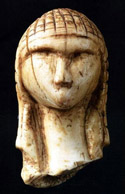Anthropology, Department of

Department of Anthropology: Faculty Publications
Document Type
Article
Date of this Version
6-2012
Citation
Human Nature 23:2 (June 2012), pp. 149-172; doi: 10.1007/s12110-012-9144-x
Abstract
We have identified a sample of 53 societies outside of the classical Himalayan and Marquesean area that permit polyandrous unions. Our goal is to broadly describe the demographic, social, marital, and economic characteristics of these societies and to evaluate some hypotheses of the causes of polyandry. We demonstrate that although polyandry is rare it is not as rare as commonly believed, is found worldwide, and is most common in egalitarian societies. We also argue that polyandry likely existed during early human history and should be examined from an evolutionary perspective. Our analysis reveals that it may be a predictable response to a high operational sex ratio favoring males and may also be a response to high rates of male mortality and, possibly, male absenteeism. Other factors may contribute, but our within-polyandry sample limits analysis.
Included in
Demography, Population, and Ecology Commons, Family, Life Course, and Society Commons, Gender and Sexuality Commons, Place and Environment Commons, Social and Cultural Anthropology Commons, Sociology of Culture Commons


Comments
Copyright © 2012 Springer Science + Business Media. Used by permission.
This manuscript received the Best Paper by a Student award from the Evolutionary Anthropology Section of the American Anthropological Association at the annual meeting in Montreal, November 2011.
This research was featured in The Atlantic, Feb. 3, 2013, http://www.theatlantic.com/health/archive/2013/02/when-taking-multiple-husbands-makes-sense/272726/